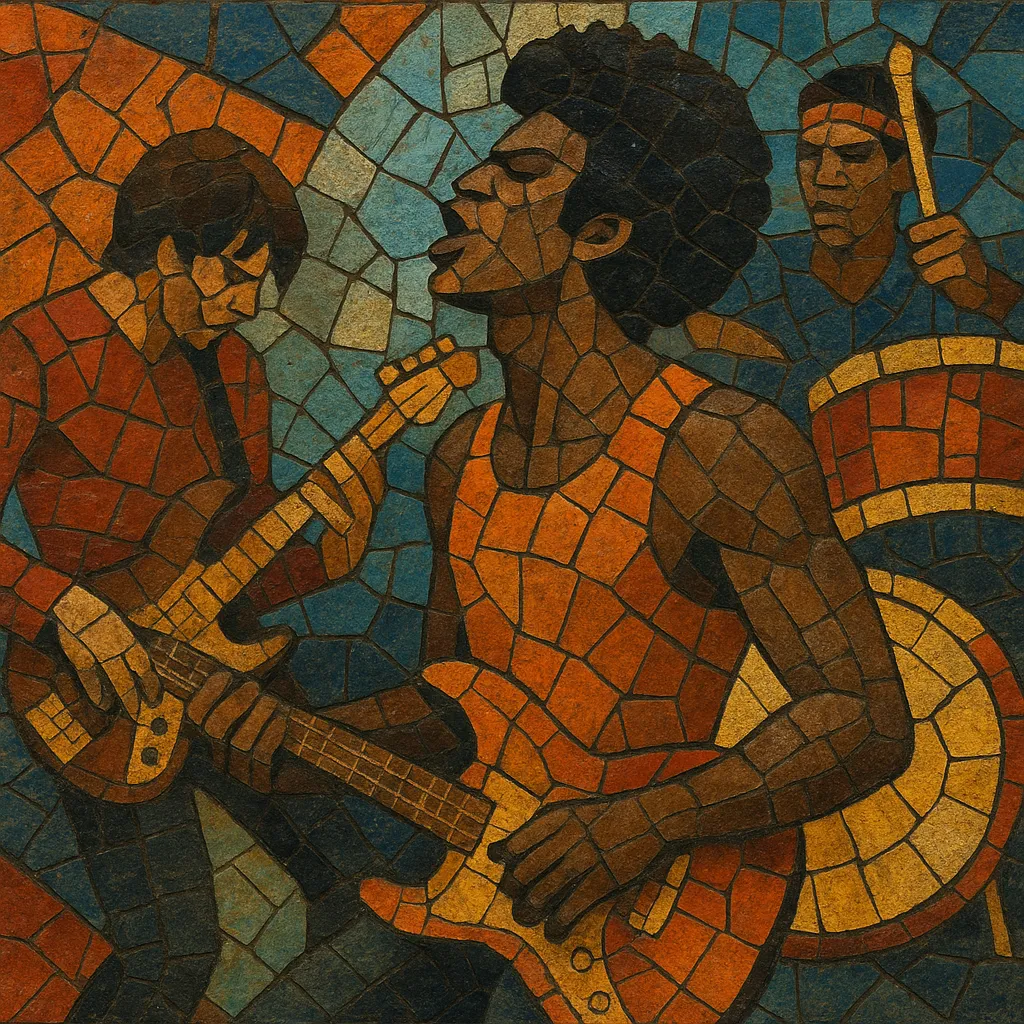Funk rock fuses the syncopated grooves, percussive bass work, and rhythmic guitar of funk with the drive, distortion, and song structures of rock.
It typically features tight, syncopated rhythms; slap or popped electric bass lines; wah‑wah or muted, percussive guitar riffs; and energetic vocals that may move between singing, shouting, and occasional rap‑tinged phrasing. Harmonically, it favors dominant 7th chords, vamps, and modal movement (often Mixolydian), prioritizing groove over complex chord changes.
From early experiments in the late 1960s and 1970s to the genre’s wider visibility in the 1980s and 1990s, funk rock has remained a high‑energy, danceable style that bridges soul‑derived rhythm with rock’s edge.
Artists such as Sly and the Family Stone and Jimi Hendrix (especially the Band of Gypsys era) began splicing funk’s syncopation and bass‑forward feel into rock formats. In the early 1970s, Funkadelic pushed psychedelic guitar tones and heavy grooves into explicitly rock contexts, while groups like Mother’s Finest codified a band format that could pivot from hard‑rock riffs to tight funk vamps.
The 1980s saw a surge of bands making funk central to alternative and hard‑edge rock. Red Hot Chili Peppers distilled punk’s attack, slap bass, and funk rhythms into concise, high‑tempo songs, while Fishbone and Living Colour showcased technical prowess and genre‑fluid songcraft. Prince brought a pop‑savvy, virtuosic take on funk rock, blurring boundaries between R&B, new wave, and guitar‑driven rock.
Funk rock’s DNA spread widely across alternative and metal scenes. Primus, Faith No More, and Extreme mixed virtuosic bass, odd meters, and hard‑rock heft with unmistakable funk feel, paving the way for funk metal and rap rock hybrids. The style’s rhythmic emphasis influenced everything from alt‑rock rhythm sections to the grooves underlying early nu metal.
While fewer bands market themselves strictly as funk rock, its elements—syncopated rhythm guitar, slap bass, and danceable backbeats—remain integral to alternative, pop‑rock, and crossover metal. Legacy acts continue to tour, and new artists routinely mine the idiom’s grooves, updating production (tighter low‑end, crisper transient control) while retaining the core premise: rock energy anchored by funk groove.


